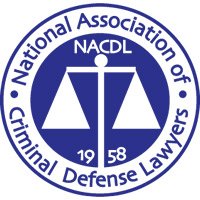JOINING UNRELATED CRIMES “OF THE SAME OR SIMILAR CHARACTER” CREATES DANGER OF PREJUDICE”
The joinder of offenses that are “of the same or similar character” creates the greatest danger of prejudice to the defendant, and where same arises out of separate, unrelated transactions, criticism has been severe. US v. Halper, 590 F.2d 422 (2d Cir. 1978); Drew v. US, 331 F.2d 85 (D.C. Cir. 1964); US v. Lotsch, 102 F.2d 35 (2d Cir.) cert. denied, 307 US 622
(1939); US v. Nadler, 353 F.2d 570 (2nd Cir. 1965); US v. Smith, 112 F.2d 83 (2d Cir. 1940):
Dummill v. US, 297 F.2d 34 (8th Cir. 1961); Edwards v. Squier, 178 F.2d 758 (9th Cir. 1949); Patterson v. US, 324 F.2d 310 (5th Cir. 1963). See also Wright, Federal Practice and Procedure: Criminal, §143; Moore’s Federal Practice- Criminal Rules, §14.03 [describing such joinders as “inherently prejudicial”], and 8.05(2) and 8.06(1).
Clearly, the danger of prejudice is present where a defendant is forced to defend against unrelated crimes in the same trial. In US v. Lotsch, 102 F.2d 35 (2d Cir.), cert. denied, 307 US 622 (1939), Judge Learned Hand spoke to the issue:
“There is indeed always a danger when several crimes are tried together, that the jury may use the evidence cumulatively; that is, although so much as would be admissible upon any one of the charges might not have persuaded them of the accused’s guilt, the sum of it will convince them as to all. This possibility violates the doctrine that only direct evidence of the transaction charged will ordinarily be accepted, and that the accused is not to be convicted because of his criminal disposition.” US v. Lotsch, Supra, at p. 36.
And in US v. Smith, 112 F.2d 83, 85 (2d Cir. 1940), the Second Circuit noted that “even when cautioned, juries are apt to regard with a more jaundiced eye a person charged with two crimes than a person charged with one.” See also US v. Nadler, 353 F.2d 570, 572 (2d Cir. 1965).
In US v. Halper, 590 F.2d 422 (2d Cir. 1979), discussed more thoroughly below, the Court listed disadvantages and dangers to the defendant created by joinder of otherwise unrelated offenses:
“The disadvantage to which a defendant is put and the potential danger to which a defendant is exposed by joinder of offenses of ‘same or similar character’ are easily understood. As explained by the Court of Appeals for the District of Columbia Circuit:
(1) [the defendant] may become embarrassed or confounded in presenting separate defenses; (2) the jury may use the evidence of one of the crimes charged to infer a criminal disposition on the part of the defendant from which is found his guilt of the other crime or crimes charged; (3) the jury may cumulate the evidence of the various crimes charged and find guilt when, if considered separately, it would not so find. A less tangible, but perhaps equally persuasive, element of prejudice may reside in a latent feeling of hostility engendered by the charging of several crimes as distinct from only one.” US v. Halper, Supra, at p. 430, quoting Drew v. US, 331 F.2d 85,88 (D.C. Cir. 1964).











